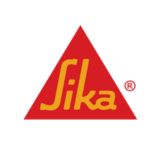REDUCE ENERGY CONSUMPTION AND SAVE MONEY
As anyone who lives or works in the city will attest, it’s hotter in the concrete jungle than it is in surrounding rural areas. Dark colored roofs and pavement, along with fewer trees and shrubs to shade buildings, are a few of the major factors contributing to what is known as the urban heat island effect.
MINIMIZING THE HEAT ISLAND EFFECT
Hot roof surfaces are being targeted because they are unnecessary sources of heat that contribute to elevated air temperatures and increased demands on air conditioning which, in turn, lead to smog formation and higher energy bills. Green roofs and white reflective roof surfaces can help lessen the urban heat island effect, improve air quality and reduce a buildings demand on energy which in turn saves the building owner money. Other roofing options to help save money when it comes to energy are the installation of solar roofs or skylights.
NASA INVESTIGATES THE HEAT ISLAND EFFECT
In July of 1998, two NASA scientists, Drs. Jeff Luvall and Dale Quattrochi, conducted research to see if they could identify surfaces that exacerbate oppressive urban air temperatures and accelerate the formation of smog. The NASA team used a specially equipped airplane to record photographic and thermal infrared images in order to detect all the “hot spots” in Salt Lake City, Utah. The 865,000-square-foot roof on the RC Willey Distribution Center utilizes a Sarnafil EnergySmart reflective roof membrane in white. The blue-green color of the building in the thermal image proves it is absorbing less solar radiation than the surrounding structures shown in red, yellow and orange. The physical and reflective properties of the cool roofing membrane on the RC Willey warehouse illustrate the specific cooling impact that reflective roofs can have in reducing air temperatures within "urban heat islands."
WHITE REFLECTIVE "COOL ROOFS"
Highly reflective roof surfaces, such as Sika Sarnafil’s EnergySmart Roof®, are being recommended by both the scientific and environmental communities as a way to help mitigate increases in building and surrounding temperatures and to help improve air quality. Dark colored roofs absorb a tremendous amount of solar radiation and become extremely hot. These hot roof surfaces are unnecessary sources of heat that contribute to elevated air temperatures and the increase in energy used to cool the building.
In most geographic areas, an air temperature increase translates into an air quality decrease. Highly reflective roofs diminish this condition and have recently been identified as the environmentally preferable roofing solution.
COOL ROOF MYTHS BUSTED
Despite an enviable performance history, there are some within the commercial roofing industry that have questioned the science behind cool roof technologies, the impact of cool roofs in northern climates, and the overall performance characteristics of reflective roofing.
THE ENERGYSMART ROOF®
Sika Sarnafil’s EnergySmart Roof features a White, Tan, Reflective Gray or Patina Green reflective surface. These surfaces have been proven to reduce the amount of energy required to maintain comfort in an air-conditioned building by decreasing heat flow through the building envelope. “Cool roofing systems” like the EnergySmart Roof can save money, improve occupant comfort, increase a roof’s longevity, and reliably protect a building and its contents.
As the graph shows1, using a white, highly reflective EnergySmart Sarnafil roofing membrane can save significant amounts of energy, depending on the location of the roof. When compared with a black colored membrane over a period of 35 years on a roof area of 1,000 m² in Miami, white Sarnafil roofing can result in avoided carbon emissions of about 211.053 t CO₂-eq. per 1,000 m² of roof surface. Saving energy can equate to financial savings, as well; if 80% of all commercial buildings in the U.S. had cool roofs, there would be approximately $735 million in overall energy savings!2
Estimated cumulative potential energy savings due to the use of white Sarnafil S 327 membrane compared with a black roof:
Total Primary Energy Consumption [MJ/1,000m2]
ENERGYSMART AND ENERGYSTAR
Sika Sarnafil was the first single-ply membrane manufacturer to label roofing products under the EPA’s Energy Star Roof Products program. This program is a voluntary partnership between the EPA and a select group of roof product manufacturers. The focus of the program is to promote the environmental and economic benefits of reflective roofing. As a Charter Partner of the program, Sika Sarnafil’s EnergySmart Roof has gained much attention in the media and with well-known research institutes.
ENERGY SAVING ROOFING SOLUTIONS:
GREEN "VEGETATED" ROOFS
More green roofs and fewer dark colored roofs equal a cooler city. Dark roofs retain heat while plants naturally cool their surrounding environments through evapotranspiration cycles. In cities where the ambient temperature can be up to 10 degrees hotter than the surrounding areas, green roofs can help bring the overall temperature down.
Green roofs are also great insulators. They can reduce peak energy demand by lowering a building’s cooling costs in the summer months and heating costs in the winter months. The addition of a green roof to an unused area on a building is beneficial for the surrounding environment and the building owner’s wallet!
On an average summer day, a city like Chicago can actually be 10 degrees warmer than its suburban neighbors due to the urban heat island effect. To help reduce the urban heat island effect in Chicago, the city installed a green roof on their city hall. As a result, when summer temperatures reach 90 degrees in Chicago, City Hall’s green roof reflects the temperature outside, while its neighbor’s roof can reach nearly 160 degrees. By installing a green roof, the improved insulation properties can lessen the requirement from the building’s heating and air conditioning systems by as much as 30%.
